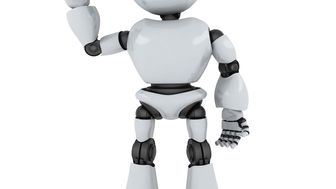Last week a federal judge threw out for the second time a visual effects software creator’s copyright claim against Disney for using its VFX technology to create the iconic Avengers villain, Thanos.
U.S. District Judge Jon S. Tiger granted Disney’s motion to dismiss Rearden LLC’s lawsuit, finding Reardan failed to support its contention that the copyright protection afforded to its computer program extends to the program’s output – 3D models used to create character animations.
The software at issue, MOVA, creates 3D models of a person’s face so that their movements can be digitally animated. MOVA technology was used to create or enhance the appearance of characters seen in many famous films, including The Curious Case of Benjamin Button, Harry Potter and the Deathly Hallows, Part I, and The Avengers, according to the (amended) lawsuit filed in April 2022.
This case is just one piece of a longstanding controversy surrounding the ownership and use of MOVA. Rearden asserted ownership of MOVA back in 2017, alleging that its technology had been stolen by a rogue employee and illegally licensed to major studios through a digital effects company called DD3. Judge Tiger held following a bench trial that Rearden is the exclusive owner of MOVA, and that DD3 cannot use or license the animation software.
Now Rearden says that DD3, pursuant to its contract with Disney, used MOVA to animate Thanos, the villain played by Josh Brolin in the films Avengers: Infinity Wars and Avengers: Endgame. Reardan brings claims for secondary copyright infringement against Disney predicted on DD3’s unauthorized use of output images produced with MOVA and the computer-generated characters derived from those images.
A computer program is entitled to copyright protection. But, according to Judge Tiger, the output of a computer program is protectable expression only if the program itself does the “lion’s share” of the creative work and the program user’s creative input is, in contrast, “marginal.” The results of the 3D animation program are not protected unless MOVA, rather than the actors and directors who use the program, does the heavy lifting to create the output. Yet, in its amended complaint “Rearden alleges the opposite” – it relies on Disney’s contentions that film directors perform the lion’s share of the creativity involved the motion capture process. But Judge Tigar gave Reardan twenty-one days from his February 21, 2023 order to file an amended complaint containing facts supporting that the outputs are protectable expression.
Interestingly, on the same day that Judge Tiger's issued his opinion granting Disney's motion to dismiss, the U.S. Copyright Office determined that images in a graphic novel that were created using the artificial-intelligence system "Midjourneys" should not have have been granted copyright protection because images that "are not the product of human authorship" cannot be copyrighted. The Copyright Office's decision is one of the first by a U.S. court or agency on the scope of copyright protection for works created with AI, but you can expect to see a lot more decisions grappling with this issue as generative AI software like Midjourney, Dall-E, and ChatGPT become increasingly more popular and more widely used. But if images that are not the product of human authorship are not protectable, can MOVA-generated images (and the characters created from those 3D images) be protectable under copyright law? Stay tuned.


/Passle/5cb04e9a989b6e13ecfcf95d/SearchServiceImages/2025-12-15-19-28-56-508-694061786b04b88e2d8bcb21.jpg)
/Passle/5cb04e9a989b6e13ecfcf95d/SearchServiceImages/2025-12-06-02-57-22-675-69339b925912d3272a666ed5.jpg)
/Passle/5cb04e9a989b6e13ecfcf95d/SearchServiceImages/2025-11-24-20-39-22-214-6924c27a8d2aeed1c67a1176.jpg)